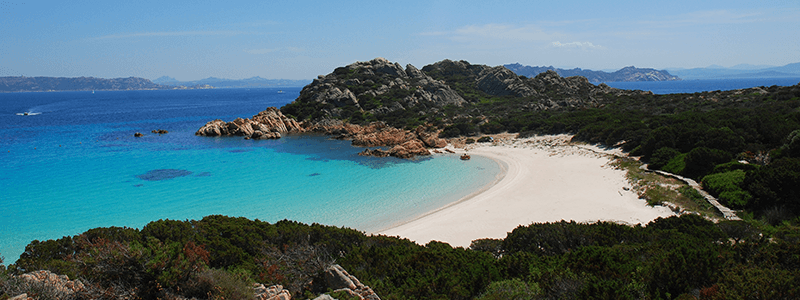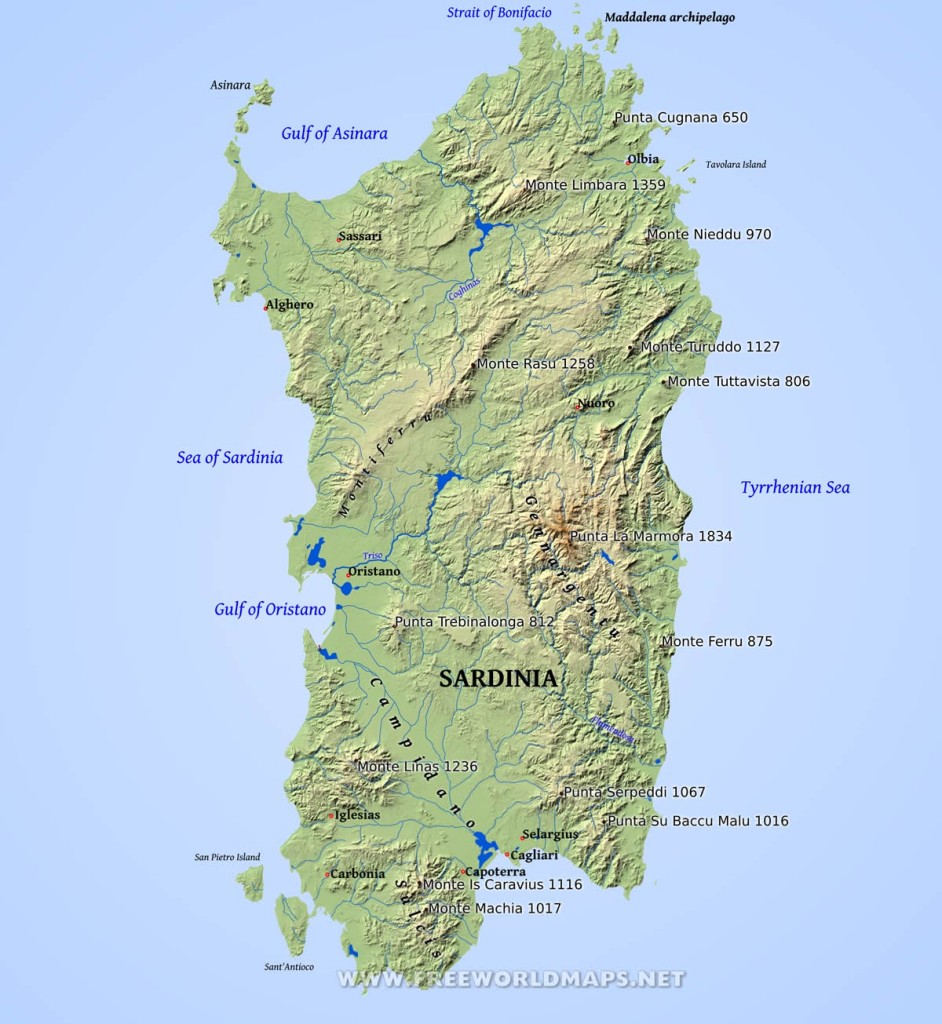
The Region of Sardegna (Sardinia) is Italy’s second-largest island, set adrift in the Mediterranean between Europe and Africa. Known for its crystal-clear waters, rugged landscapes, ancient Nuragic sites, and rich traditions, Sardegna is a world apart from mainland Italy—a land of contrasts where wild nature, deep-rooted history, and modern luxury coexist.
Often overlooked in favor of mainland destinations, Sardegna offers some of the most stunning beaches in Europe, one of the world’s oldest civilizations, and a fiercely independent identity. Whether you’re looking for sun-soaked coastlines, hidden mountain villages, or archaeological wonders, Sardegna has it all.
A Unique History: The Ancient Land of Nuraghi
A Crossroads of Civilizations
Sardegna’s strategic location in the Mediterranean made it a target for countless invaders:
- Nuragic Civilization (1800–500 BC) – Left behind thousands of nuraghi (megalithic stone towers), bronze statuettes, and mysterious tombs.
- Carthaginians & Romans – Built cities like Nora and Tharros, still visible today.
- Byzantines & Pisans – Brought Romanesque churches and fortresses.
- Spanish & Catalans – Influenced architecture and language, especially in Alghero.
Even today, Sardegna retains a strong local identity, with its own language (Sardo) and traditions that set it apart from the rest of Italy.
Top Cities and Towns to Visit in Sardegna
Cagliari – The Vibrant Capital of Sardegna
Cagliari is a city of layers, where ancient ruins meet bustling streets and golden beaches.
Must-See Attractions:
- Castello District – A historic hilltop quarter with medieval towers and panoramic views.
- Bastione di Saint Remy – A grand terrace overlooking the city.
- Poetto Beach – One of Sardegna’s longest beaches, perfect for sunbathing and watersports.
- Roman Amphitheater – A well-preserved ancient structure, once used for gladiator fights.
Alghero – The Little Barcelona of Sardegna
Alghero is a picturesque coastal town with Catalan influences.
Top Attractions:
- Old Town & Catalan Walls – A charming mix of Spanish-style architecture and Italian charm.
- Neptune’s Grotto – A breathtaking sea cave filled with stalactites and stalagmites.
- Maria Pia Beach – A white sandy beach with turquoise waters.
Olbia – The Gateway to the Costa Smeralda
Olbia is the main entry point for travelers arriving by ferry or plane, offering easy access to Sardegna’s luxurious northern coast.
Highlights:
- San Simplicio Basilica – An ancient Romanesque church.
- Tavolara Island – A dramatic limestone island, perfect for hiking and diving.
- Pittulongu Beach – A stunning spot with soft sand and clear blue waters.
Nuoro – The Heart of Sardinian Culture
Nuoro is Sardegna’s cultural capital, home to traditional festivals and mountain landscapes.
Must-Visit:
- Ethnographic Museum – Showcasing Sardinian traditions, costumes, and crafts.
- Monte Ortobene – A panoramic viewpoint with a famous statue of Christ the Redeemer.
Bosa – Sardegna’s Colorful Riverside Town
Bosa is a fairytale town with pastel-colored houses along the Temo River.
Top Attractions:
- Malaspina Castle – A medieval fortress with incredible views.
- Bosa Marina – A beautiful beach with golden sand and calm waters.
Sardegna’s Stunning Beaches: Some of the Best in the World
Costa Smeralda – The Luxury Playground of the Mediterranean
Costa Smeralda is Sardegna’s most glamorous region, known for celebrity yachts, white-sand beaches, and luxury resorts.
Best Beaches:
- Spiaggia del Principe – A secluded cove with crystal-clear waters.
- Capriccioli Beach – Perfect for families and snorkeling.
La Maddalena Archipelago – A Paradise of Untouched Beauty
This group of islands offers some of the most breathtaking beaches in Italy.
Must-See Islands:
- Spargi Island – Known for hidden coves and dramatic rock formations.
- Budelli Island – Famous for its Pink Beach (Spiaggia Rosa).
Cala Goloritzé – The Jewel of the East Coast
A UNESCO-protected beach, Cala Goloritzé is accessible only by hiking or boat. Its white pebbles, turquoise waters, and towering limestone cliffs make it one of Sardegna’s most iconic beaches.
Chia & Villasimius – The Best of Southern Sardegna
These southern beaches rival the Caribbean.
- Su Giudeu Beach (Chia) – A pristine sandy paradise.
- Porto Giunco (Villasimius) – A beach with pink flamingos in the nearby lagoon.
The Mysterious Nuragic Civilization: Sardegna’s Ancient Wonders
Su Nuraxi di Barumini – A UNESCO World Heritage Site
Su Nuraxi is the most famous nuraghe, a fortified village dating back 3,500 years.
Other Must-See Nuraghi & Archaeological Sites:
- Nuraghe Santu Antine – One of the largest and most complex nuraghi.
- Tharros – A fascinating Phoenician-Roman city by the sea.
- Domus de Janas – Ancient “fairy tombs” carved into rock cliffs.
Outdoor Adventures: Hiking, Diving, and More
Best Hiking Trails in Sardegna
- Gennargentu National Park – Home to Sardegna’s highest peaks and wild horses.
- Tiscali Cave & Village – A hidden prehistoric village inside a mountain.
Diving & Snorkeling Spots
- Capo Carbonara – Crystal-clear waters with underwater caves and colorful fish.
- Neptune’s Grotto – A spectacular cave dive near Alghero.
Sardegna’s Food & Wine: A Taste of the Mediterranean
Sardinian cuisine is distinct from mainland Italy, featuring fresh seafood, homemade pasta, and rich cheeses.
Must-Try Dishes in Sardegna
- Porceddu – Roast suckling pig, slow-cooked over an open fire.
- Malloreddus – Sardinian gnocchi with saffron and sausage sauce.
- Seadas – A honey-drizzled cheese pastry, served as dessert.
- Fregola con Arselle – A Sardinian pasta dish with clams and saffron.
Sardegna’s Best Wines
- Cannonau – A robust red wine, said to contribute to Sardegna’s long life expectancy.
- Vermentino di Gallura – A crisp, white wine, perfect for seafood.
Getting Around Sardegna
Public Transport
- Buses – Connect major cities but are limited in rural areas.
- Trains – Operate between Cagliari, Sassari, Olbia, and Oristano.
Best Way to Explore?
A rental car is essential for reaching hidden beaches, mountain villages, and ancient sites.
Why Visit the Region of Sardegna?
Sardegna is a world of its own, offering:
✅ Stunning beaches and crystal-clear waters
✅ Ancient ruins and unique history
✅ Outdoor adventures in mountains and caves
✅ Delicious cuisine and fine wines
Whether you’re relaxing on the Costa Smeralda, exploring Nuragic ruins, or hiking in Gennargentu, Sardegna promises an unforgettable experience.

